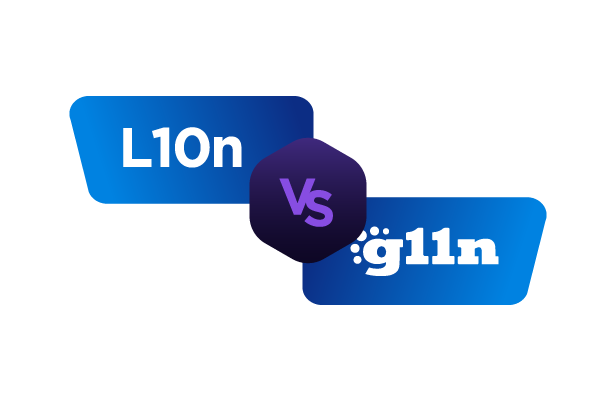

Localization VS Globalization: Difference & Examples
- What is Localization?
- Translation
- Adjusting visuals
- Changing currencies and payment options
- Modifying marketing campaigns
- Offering products specifically designed for locals
- Benefits of Localization
- Example of Localization
- What is Globalization?
- Benefits of Globalization
- Example of Globalization
- Localization vs Globalization: Key Differences
- Localization VS Globalization: Wrapping up
Localization and globalization strategies pave the way for business growth, expanding to new markets, and reaching new audiences. However, what is the difference between these two tactics? Let us clarify things a little.
What is Localization?
In short, localization (l10n) is the process of adjusting a product or service to respond to a specific locale’s needs and preferences.
The process involves an adaptation of your product to the cultural nuances of a target audience, including language, currency, payment preferences, measurement units, humor, etiquette, preferred colors, and even ‘reading gravity’ (the way a person’s eye scrolls through a page).
Localization takes a product, content, or service and makes it feel ‘native’ for the local population, as if locals created it. Adapting your business to the culture of a target market should involve the following.
Translation
Adapting the content to a target language is a must, with 76% of customers preferring to navigate the page in their native language and 40% of those never buying from a web in a foreign language. However, it’s not just a word-by-word translation, as it should take into account slang, idiomatic expressions, and local linguistic subtleties to appeal to a specific audience.
Adjusting visuals
Choosing colors, fonts, layouts, images, graphics, etc., based on cultural preferences. Data analytics help to define which visuals work better in a certain locale and bring the most traffic and conversions.
Changing currencies and payment options
Customers are more likely to buy a product if they see their local currency. Plus, adapting payment methods to a locale, for example, some countries have Paypal, and some don’t.
Modifying marketing campaigns
It’s crucial to consider cultural ‘taboos’ to launch successful marketing campaigns. The Coca-Cola campaign ‘Share a coke with + first name’ could have failed in China if a company hadn’t localized it with ‘Share a coke with + a close friend/classmate/etc.’, as it is impolite to address a person by the first name in this country.
Offering products specifically designed for locals
A perfect way to foster a strong connection with customers by creating products tailored to their culture and values.
Benefits of Localization
Localizing your product makes your marketing feel native to a target audience and brings a range of long-lasting effects, including:
- Earning your audience’s trust
- Enhancing customer experience
- Increasing ROI
- Improving SEO
- Boosting brand awareness
- And generating more revenue
Continuous localization expands business opportunities for growth and increases efficiency in new markets.
Example of Localization
HubSpot is a CRM platform that has been localized for multiple regions and languages.
They have localized their website, help center, as well as their app. Furthermore, if you take a minute to browse through languages, you’ll notice it’s not just the language that differs, but also the messaging, targeting, and imagery.
This is a common localization practice with the aim of making the targeted locale feel more at home, which is proven to increase conversion rates and, thus, ROI.
What is Globalization?
Simply put, globalization refers to expanding your product or service to global markets, instead of a specific audience. Globalization and localization go together, with the former including the latter.
Globalization takes a business strategy focused on a single-country product or service and develops it into a multinational one by entailing the following factors:
- Focusing on global branding: Creating a consistent brand image appealing to customers from different countries. What are the global values of your brand, and how can they reach people internationally?
- Choosing a plan of action for market entry: Which tactics work the best for your product or service? A company can choose among a range of strategies, including franchising, exporting, piggybacking, partnering, licensing, joint ventures, buying a company, and more. It is crucial to consider the importance of marketing analytics when planning the market entry strategy.
- Developing strategy for supply chains: It’s crucial to think through how your brand will deliver the desired quality of customer experience to multiple markets. A company needs to ensure that international aspects like shipping or trade regulations won’t have any undesired effects on the level of customer service.
- Examining regulations: Expanding to new markets entails operating under new laws. A business should learn about data acquisition regulations, the employment process, international trade laws, investment laws, import limitations, and many others.
Benefits of Globalization
Promoting your product or service to global markets can have a large impact on brand reputation, customer experience, and business profits. Among the top benefits of entering multiple markets are:
- Expanded customer exposure
- Increased competitive advantage
- Boosted brand image
- Increased revenues
- And enriched scope of influence
Example of Globalization
McDonald’s, Netflix, Shopify, Amazon, Coca-Cola, Nike, and Starbucks are among the top influential companies that take globalization seriously. What’s the thing that these brands have in common? A feeling that you are a part of something big and known worldwide, but as if created exclusively for you — this is globalization and localization in action.
Netflix reached 190 countries within 7 years. First of all, their globalization strategy was consistent, focusing on shared cultural similarities and the global need for personalized content. Secondly, the company focused on optimizing the content of the locale’s language by adding it to a user interface, subtitles, and dubbing to improve customer experience.
However, an unprecedented move was to partner with local companies to create local content with a global Netflix image in mind. The company saw such content production not only for local audiences but rather as local content for global audiences. Having a deep understanding of customers, Netflix manages to create content appealing to a wide range of viewers globally.
Localization vs Globalization: Key Differences
Localization’s scope of action is adapting a product or service to the different needs of one specific audience, while globalization is about making a brand appealing to multiple audiences. The former focuses on differences, while the latter pays attention to similarities.
Here are some fundamental differences between localization vs globalization:
- Culture: Globalization promotes the values of a brand internationally. Everywhere you go, you’ll see a famous McDonald’s sign implying getting the same cheeseburger on the same tray from a person in the same uniform. However, localization makes it possible to try McNifica in Mexico and chicken-only McSpicy delicacies in India.
- Language: Reaching new markets and using English as an international language for your web is globalization. Whereas adapting your content to a regional language is localization.
- Payment options: Making it possible to purchase a product online and get it shipped to multiple countries is about going global. Enabling price display in a local currency is localization taking place.
- Imagery and formatting: Globalization focuses on making a product or service suitable for broad audiences, using commonly acceptable colors, images, and formats. However, localization pays attention to details inherent to a specific audience, like adapting readability from right to left instead of left to right.
- Audience: A significant difference between localization vs globalization is market reach. Globalization concentrates on reaching wider audiences, while localization appeals to a locale. However, the two concepts often work indispensably together as a brand enters multiple markets with common international value and adapts it to meet local demands.
Localization VS Globalization: Wrapping up
Localization and globalization have their differences when it comes to tactics needed for expanding a business. However, the thing they have in common is that both strategies work better together and complement each other.










